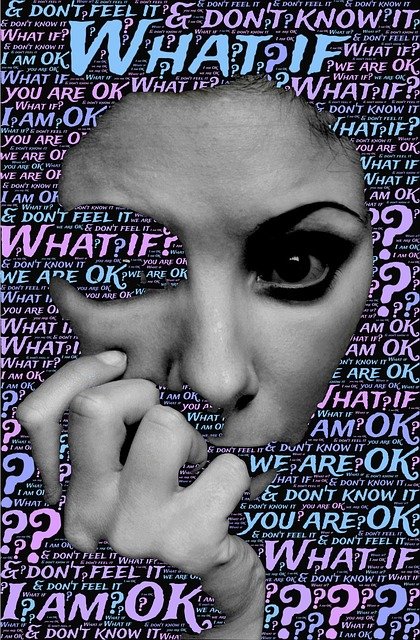A trauma bond is a psychological phenomenon that occurs when an individual forms a strong emotional attachment to an abusive partner in a relationship. This bond is often rooted in a pattern of intermittent reinforcement. In other words, there are cycles of abuse and affection, and this perpetuates a connection that is difficult to break. Even when the relationship is detrimental to the victim’s well-being. Understanding the dynamics of trauma bonds and how they develop is crucial in identifying signs of abusive relationships and working toward healing and recovery.
This complex relationship between victim and abuser can take a severe toll on the mental health of the victim. Leading to increased risks of anxiety, depression, and post-traumatic stress disorder. Addressing the trauma bond is a critical step in breaking free from an abusive relationship. Seeking help through therapy, support systems, and effective coping mechanisms.
Key Takeaways
- Trauma bonds form strong emotional attachments between victims and their abusive partners.
- Understanding the dynamics of trauma bonds can help in identifying signs of abusive relationships and seeking help.
- Addressing the trauma bond is crucial for healing and recovering from the effects of abusive relationships.
Understanding Trauma Bonds
Trauma bonds are a form of unhealthy attachment that can develop between individuals involved in an abusive or toxic relationship. They are characterized by a strong emotional connection that persists despite experiencing abuse or manipulation. Trauma bonding occurs when the victim forms a strong emotional attachment to the abuser due to a cycle of comfort and emotional abuse.
This type of bond often develops in romantic relationships where one partner uses manipulation, control, and fear to maintain power over the other. The victim becomes addicted to the abuser’s affection and attention. Therefore, ultimately become trapped in a cycle of abuse and emotional turmoil. Unhealthy attachments like trauma bonds are often rooted in the individual’s attachment style, which can be influenced by their past experiences in childhood and early relationships.
In a trauma bond, the abused individual may struggle to break free from the destructive cycle due to a combination of fear, and addiction. However, the abused may have a misplaced sense of empathy toward the abuser. This misplaced empathy may lead the victim to rationalize and excuse abusive behavior, further solidifying the bond.
Trauma Bonds Have Various Contexts
Trauma bonding can be seen in various contexts, including romantic relationships, friendships, and even family dynamics. However, it is most commonly observed in situations where emotional abuse and manipulation are used as a form of control. The abuser may create a sense of fear and instability, only to provide comfort and support when the victim is most vulnerable, fostering a dependence on the abuser for safety and reassurance.
Understanding trauma bonds is essential for those who are seeking to break free from these unhealthy connections. Recognizing the signs of trauma bonding and seeking help from a knowledgeable therapist or support group can be crucial steps in breaking the cycle of abuse and fostering healthier, more stable relationships in the future.
Identifying Signs of Trauma Bonds

Trauma bonds are intense emotional connections that form between two people within an abusive or unhealthy relationship. Identifying the signs of trauma bonds can help individuals recognize the unhealthy aspects of the relationship and potentially seek help.
One common sign of trauma bonding is experiencing feelings of intense love for the abuser, often coupled with a strong desire to protect and help them, despite the harmful behavior they exhibit. This attachment can lead to a cycle of abuse, with victims rationalizing and excusing the actions of the abuser in order to maintain a sense of love and connection.
Cycles of abuse often involve manipulation, gaslighting, and lies from the abuser. This can lead to increased self-doubt and difficulty understanding one’s own emotions. Victims may start to question their own memories, believing that they are at fault for their experiences or that they are imagining the abuse.
Another sign to look for is a pattern of threats and positive reinforcement by the abuser. Abusers may threaten physical harm, emotional consequences, or even break-up or abandonment to keep the victim in a state of fear and dependence. They may also use intermittent periods of love bombing, showering the victim with affection, and attention to create a sense of hope and reassurance. This hope often reinforces the attachment to the abuser, making it difficult for the victim to break free.
Symptoms of trauma bonding can manifest differently depending on individual attachment styles and emotional regulation. Guilt, shame, and a sense of responsibility for the abuser’s actions are common feelings that can help maintain the bond. People with a history of insecure attachment might be more likely to form trauma bonds, as their own emotional needs and fears of abandonment intersect with the abuser’s manipulative behavior.
Effects of Trauma Bonds on Mental Health

Trauma bonds can have a significant impact on an individual’s mental health. These bonds are formed in abusive relationships, where the victim becomes emotionally attached to the abuser due to the intensity and unpredictability of the abuse. This can lead to a variety of adverse mental health consequences, including depression, anxiety, and low self-esteem.
Depression is a common outcome of trauma bonding, as victims may feel trapped in a cycle of abuse and struggle to see a way out. They may also experience persistent sadness, hopelessness, and fatigue. Anxiety can also result from trauma bonds, as individuals may feel constantly on edge and fearful of their abuser’s reactions. This heightened state of anxiety can lead to sleep disturbances, irritability, and difficulty concentrating.
Moreover, trauma bonds can profoundly affect an individual’s self-esteem. The constant presence of emotional or physical abuse can make victims doubt their worth and question their ability to form healthy relationships. Feelings of inadequacy and shame may arise, further exacerbating their mental health struggles.
Post-traumatic stress disorder (PTSD) is another potential consequence of traumatic bonding. Exposure to toxic or abusive relationships can trigger symptoms such as intrusive thoughts, avoidance of reminders of traumatic events, and negative changes in mood or cognition. In some cases, these PTSD symptoms can become disabling, severely impacting the individual’s ability to function in their daily life.
In conclusion, trauma bonds can have detrimental effects on mental health, manifesting in various forms, such as depression, anxiety, low self-esteem, and PTSD. It is crucial for individuals experiencing these effects to seek professional help and intervention to break free from the cycle of abuse and learn how to establish healthy relationships in the future.
Role of Abusive Relationships

Abusive relationships can be characterized by an ongoing pattern of power and control inflicted by one person upon another. These relationships often involve manipulation, mistreatment, and deceit. The abused person may face emotional, psychological, or physical harm, which in turn can lead to the formation of what is known as a trauma bond.
A trauma bond is a deep emotional attachment that develops within an abusive relationship. The victim may become reliant on their abusive partner, believing that they are the only source of stability, love, or understanding in their life. This bond forms due to the intermittent nature of abuse, as the abusive partner may occasionally display kindness or affection, leading the abused person to believe that the relationship has the potential to improve.
The Abused Often Become Isolated
In an abusive relationship, the control exerted by the abusive individual often isolates the abused person from supportive friends and family. This isolation acts as a barrier to seeking help and can contribute to feelings of self-doubt and blame. Victims may struggle with internalizing the belief that they are at fault for the abuse, or that their own flaws are the cause of the toxic relationship they are enduring. This self-blame may reinforce the trauma bond, making it more challenging for the abused person to leave the relationship.
Domestic violence is a common form of abuse seen in toxic relationships and can encompass physical, emotional, or psychological harm. The abused person may experience a range of violent behaviors from their partner, such as hitting, choking, or sexual assault. Victims of domestic violence may become trapped in the cycle of abuse due to the trauma bond, which can make it incredibly difficult to seek help or leave the relationship.
Unfortunately, trauma bonds can persist even after the end of an abusive relationship. The abused person may struggle to disengage from their attachment to the abusive partner. Often due to feelings of guilt, shame, or a misplaced sense of loyalty. The emotional damage inflicted by the toxic relationship can have long-lasting effects on the victim. Proving to be a significant challenge to overcome in the process of healing.
In conclusion, abusive relationships play a central role in the formation of trauma bonds. The dynamics of power, control, and manipulation within these toxic relationships can contribute to the victim’s inability to leave. Therefore, resulting in emotional damage and enduring attachment to their abusive partner. Addressing the complexities of trauma bonds is vital in supporting those affected by abusive relationships and working towards breaking this destructive cycle.
Realities of Domestic Violence
Domestic violence is a complex and pervasive issue that affects individuals regardless of age, gender, and socio-economic background. It is characterized by a pattern of unhealthy behaviors that include physical, emotional, and psychological abuse within intimate relationships. This often leads to trauma bonding, where victims develop strong emotional connections with their abusers.
Trust is a crucial component of any relationship. In cases of domestic violence, it is often compromised by the abuser’s control and manipulation tactics. Abusers may instill fear in their victims through threats and violence and use positive reinforcement to create a deceptive sense of safety and security. The cycle of abuse is a destructive pattern consisting of alternating phases of violence and reconciliation. Therefore, making it difficult for victims to break free.
Physical abuse is not the only form of domestic violence. Emotional and psychological abuse can also leave lasting scars on the victims. Abusers often employ tactics such as belittling, humiliation, and isolation to maintain control over their partners. This continuous erosion of self-esteem and autonomy makes it challenging for victims to recognize the severity of their situation or seek help. Even when friends and family can see the abuse clearly and tell the person to leave. The abused person can make up excuses for the abuser or avoids the conversations altogether.
In the context of domestic violence, understanding the realities faced by victims is essential in raising awareness and crafting effective interventions. Recognizing the complex dynamics within abusive relationships, including trauma bonding and the cycle of abuse. It is vital for both professionals and the general public in offering support and promoting healing.
The Stockholm Syndrome
The Stockholm Syndrome is a psychological phenomenon where individuals who are kidnapped or held hostage develop a bond with their captors. This unexpected bond can lead victims to empathize with, and even defend, their captors, despite the traumatic circumstances they are in. Understanding this complex reaction can help develop better support systems for victims involved in such situations.
In instances of kidnapping, the captor often assumes full control of the victim’s life, leading the captured individual to become reliant on them for basic needs, such as food, safety, and companionship. This power imbalance can lay the groundwork for the development of Stockholm Syndrome. As victims receive occasional acts of kindness or leniency from their captors, they may begin to view them as caring individuals, which ultimately strengthens this emotional bond.
A key aspect of Stockholm Syndrome is the victim’s identification with their captor’s motives and goals. As a coping mechanism to deal with the trauma induced by their situation. They may begin to believe that their captor’s actions and values are justifiable. This identification can result in the victim overlooking or rationalizing the captor’s abusive behavior, making them more susceptible to manipulation and control.
The psychological bond formed between captor and victim in cases of Stockholm Syndrome can make it challenging for victims to disengage from the relationship. Therefore, even when the opportunity to escape presents itself. The fear of retaliation from the captor, the acceptance of their situation, and the emotional attachment can all contribute to the victim’s reluctance to separate themselves from their captor.
The Psychodynamics of Trauma Bonds

One of the main factors contributing to the formation of trauma bonds is the fluctuation between abuse and comfort in a relationship. The victim experiences intense feelings of love and attachment during periods of comfort, which is reinforced by the release of oxytocin, a hormone associated with bonding. However, when abuse occurs, the victim’s attachment to the abuser deepens as a means to seek protection and security.
The development of trauma bonds can be understood through various stages. Initially, the victim may perceive the abusive behavior as an isolated incident or a result of their own actions. However, as the abuse continues, the victim starts to experience a sense of helplessness and despair. There is an increased dependency on the abuser, and attempts to resist the relationship may be met with further abuse. This cyclical pattern contributes to the establishment and reinforcement of the trauma bond.
In some cases, the victim of a trauma bond may experience cognitive dissonance, which is the psychological discomfort that arises from holding contradictory beliefs or feelings. To cope with this discomfort, the victim may rationalize the abusive behavior and minimize its impact. This enables the victim to maintain their emotional attachment and the belief that their relationship is based on love.
Trauma bonds can be particularly difficult to break due to the strong emotional connection and a sense of loyalty towards the abuser. Overcoming trauma bonds often requires professional support, such as therapy, and the development of healthy coping mechanisms to address the emotional turmoil experienced during the healing process.
Healing from Trauma Bonds

Healing from trauma bonds is an essential step for individuals who have experienced abusive relationships. The healing process takes time depending on factors such as the individual’s mental health, support system, and personal resilience. So be patient with yourself, and don’t self-judge or stuck beating yourself up. For myself, I am a three-time long-term trauma bond relationship survivor. So no judgment here. A combination of therapy, self-help strategies, and support from loved ones can contribute to a successful recovery.
One crucial aspect of healing from trauma bonds is seeking professional help. A therapist with experience in addressing abusive relationships and trauma bonding can provide valuable guidance and support. Cognitive Behavioral Therapy (CBT) is one evidence-based approach that can help individuals address negative thought patterns and develop healthier self-esteem. Through therapy, individuals can work on cultivating a more conscious understanding of their emotions. Identifying triggers that may cause them to return to abusive situations, and developing coping strategies to manage these feelings.
Another essential component for healing is establishing a strong support network. This can include friends, family members, and support groups that understand the challenges of dealing with trauma bonds. They can provide guidance, comfort, and encouragement. Building a community of loving, compassionate people can help reinforce positive self-talk and boost self-esteem. Therefore, making it easier for individuals to resist returning to abusive relationships.
Engaging in positive self-talk is another powerful tool in the healing process. By affirming one’s value, worth, and ability to change, individuals can counteract the negative messages they may have internalized from abusive situations. Replacing self-doubt with confidence, self-compassion, and love can help individuals develop a healthier relationship with themselves.
Self-Care
Maintaining a focus on self-care during the recovery process can also lead to relief and comfort. Engaging in activities that promote mental, emotional, and physical well-being can serve as a foundation for change and healing. This may include regular exercise, spending time in nature, pursuing hobbies, and practicing mindfulness techniques, such as meditation and deep breathing exercises.
Ultimately, healing from trauma bonds requires patience, persistence, and a commitment to change. By seeking professional guidance, building a robust support network, and prioritizing self-care, individuals can recover from the effects of trauma bonding and cultivate healthier, more loving relationships in their lives.
How To Stop Fearful Thinking Expert Tips and Strategies https://1111newme.com/2023/07/23/how-to-stop-fearful-thinking-expert-tips-and-strategies/
How to Recognize and Heal Trauma Bond Relationships https://www.healthline.com/health/mental-health/trauma-bonding
12 Signs of Trauma Bonding with Abusive Parents https://hopefulpanda.com/signs-of-trauma-bonding-with-parents/

